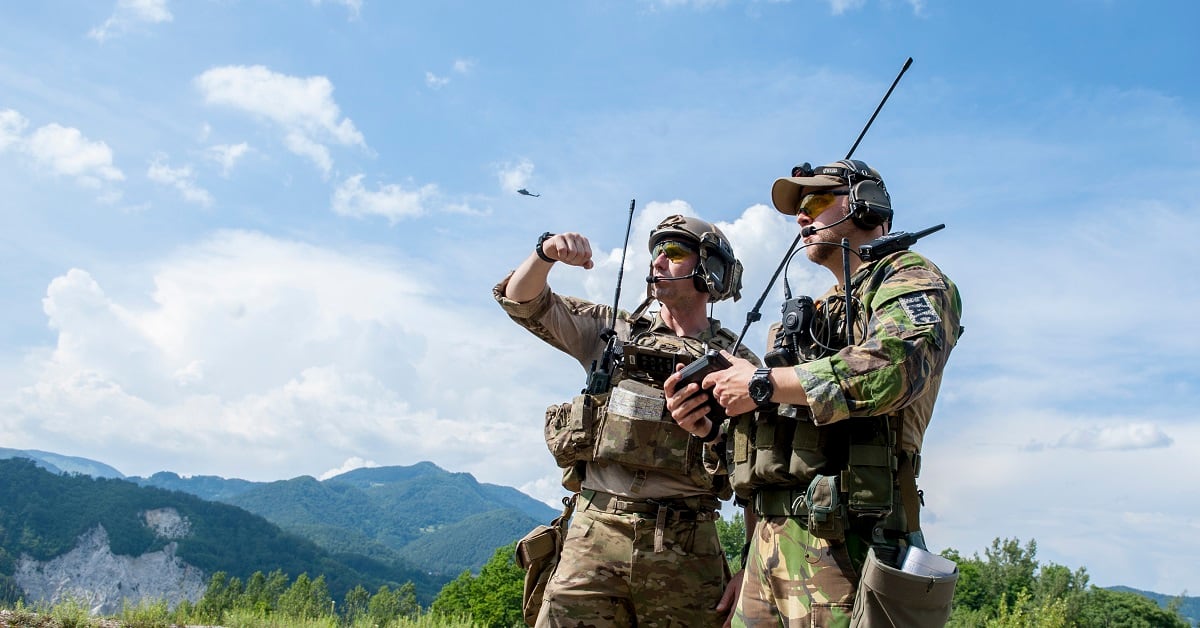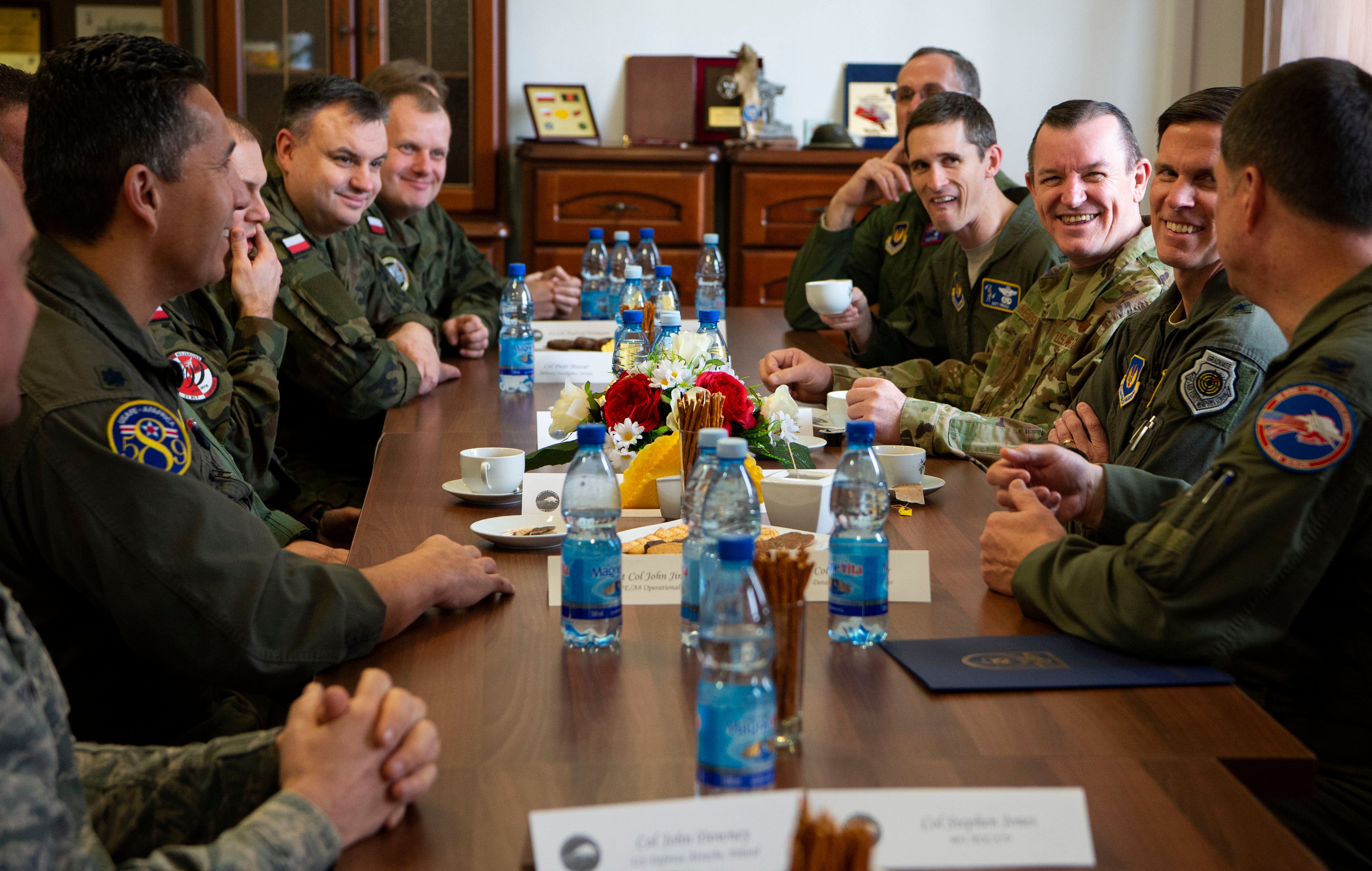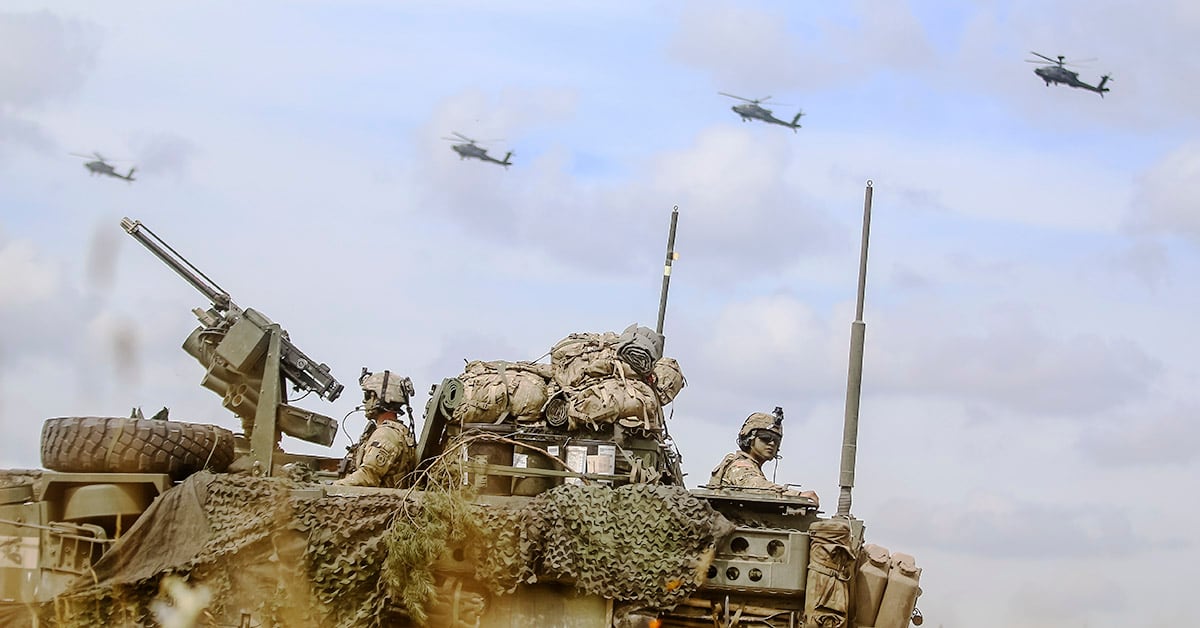U.S. Air Force MQ-9 Reapers have been flying unarmed reconnaissance missions from Poland since May, but it wasn’t until this month that the drones became fully operational.
Air Forces in Europe christened a new set of facilities at Miroslawiec Air Base, Poland, March 1 to help accommodate the Air National Guardsmen and contractors operating Reapers there.
“In addition to the completion of these projects, another important change is the remotely piloted aircraft here are now operated by both contractors and U.S. military personnel,” said Brig. Gen. Greg Semmel, Air National Guard assistant to the commander of Air Forces Europe, at the ribbon-cutting ceremony.
“This flexibility allows for the addition of new missions, and having U.S. military personnel expands the variety of missions we can accomplish," Semmel added.
The U.S. military now shares control of the Reapers at Miroslawiec during takeoff, flight and aircraft recovery with the contractors.
The new facilities for U.S. personnel include secure processing centers, a large aircraft maintenance shelter, communications infrastructure and dormitories for those assigned there, according to a 52nd Fighter Wing Public Affairs video.
RELATED

Poland was chosen for the mission due to its “strategic location in Eastern Europe," Auburn Davis, a civilian U.S. Air Forces in Europe official, told Air Force Times in May.
Air Forces in Europe has not provided many details regarding where the Reapers are flying.
Service officials have only said that the drones are providing intelligence, surveillance and reconnaissance in support of American foreign policy, as well as gathering force protection data for U.S. and international partners, according to an Air Forces Europe news release.

The airmen working out of Miroslawiec are part of the 52nd Fighter Wing’s geographically separated 52nd Expeditionary Operations Group, Detachment 2. The wing is based at Spangdahlem Air Base, Germany.
“I would like to express my gratitude to all of our U.S. friends for all you have done so far with the MQ-9 operation to provide for European security,” said Polish air force Col. Lukasz Andrzejewski, 12th Unmanned Aerial Vehicle base commander at Miroslawiec Air Base, in the news release. “We appreciate all the support, involvement, openness and kindness you give us every day.”
The U.S. airmen work closely with the Polish air force when operating the MQ-9 out of Miroslawiec, U.S. Air Force Col. Andrew Eiler, Detachment 2′s commander, said in the release.
“They all welcomed us into the community, they welcomed us into their restaurants, into their shops and into their homes,” Eiler said. “We were neighbors, but became friends and family. I am very proud of the partnership and the capability that we’ve built.”

The Polish government has been seeking closer defense ties to the U.S. over the past year, going as far as to offer $2 billion to help establish a permanent military installation to house U.S. service members and their families.
The growing foothold at Miroslawiec seems to be part of that courtship.
“Over the years our proven partnership with Poland has been built upon shared values, experience and vision,” Semmel said. “As our environment continues to change, forward locations like Det. 2 become that much more critical at enhancing our ability to safeguard European security.”
RELATED

Since the 2014 Russian intervention in Ukraine’s Crimea peninsula and Donbass region, which remains an active conflict, Poland has played a larger role in the U.S. military’s deterrence initiative in Eastern Europe.
Poland often hosts U.S. Army brigade combat teams to practice responding to an invasion on NATO’s eastern flank. The alliance’s Joint Force Training Center is also headquartered in the country.
In May, when the Reaper mission in Poland was first announced, a retired U.S. Air Force pilot who flew both the MQ-1 Predator and MQ-9 Reaper told Air Force Times that the drones would likely serve as a deterrent in support of NATO allies, with the flexibility of future employment if the situation in Ukraine deteriorated.
Right now, though, the pilot said the drones would be difficult to use in conflict zones like eastern Ukraine.
“Drones may be vulnerable to Russian-supplied [anti-aircraft artillery] and [surface-to-air missiles], so it may not be prudent to commit them against the rebels or to escalate an already tense situation,” the Reaper pilot said. “We currently operate in arenas where we have total air supremacy. That’s something we would not have in eastern Ukraine."
The more likely air corridors are around the Black Sea and near the Baltic states, through which the Reapers will fly and provide their ISR services.
Kyle Rempfer was an editor and reporter who has covered combat operations, criminal cases, foreign military assistance and training accidents. Before entering journalism, Kyle served in U.S. Air Force Special Tactics and deployed in 2014 to Paktika Province, Afghanistan, and Baghdad, Iraq.





